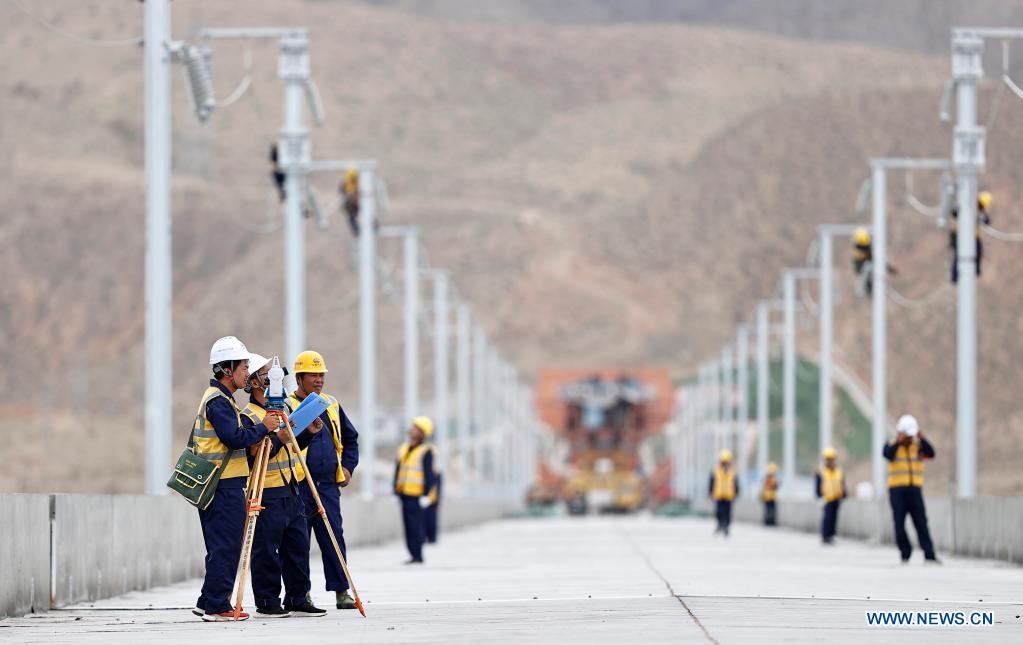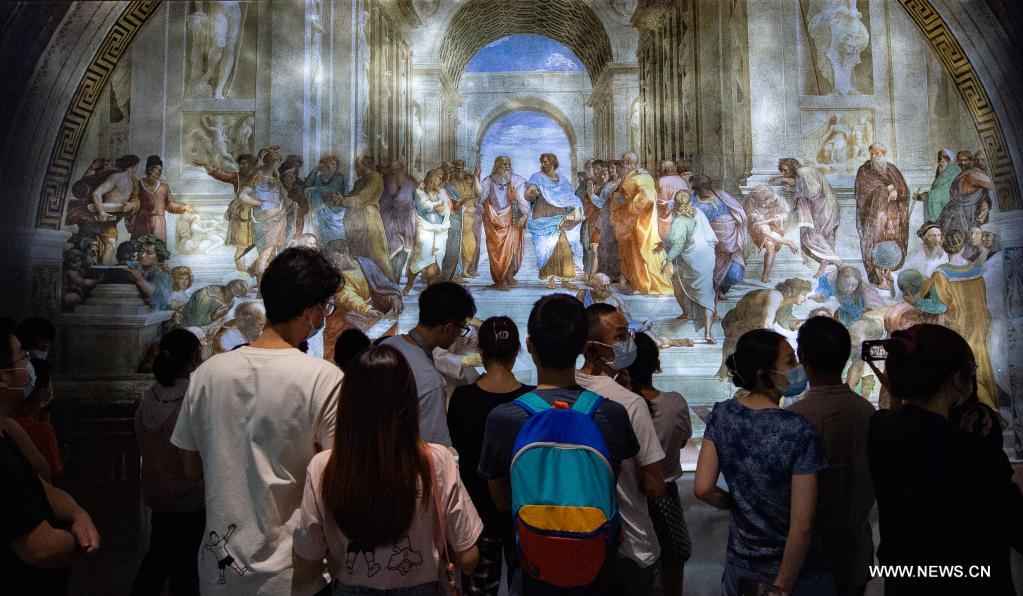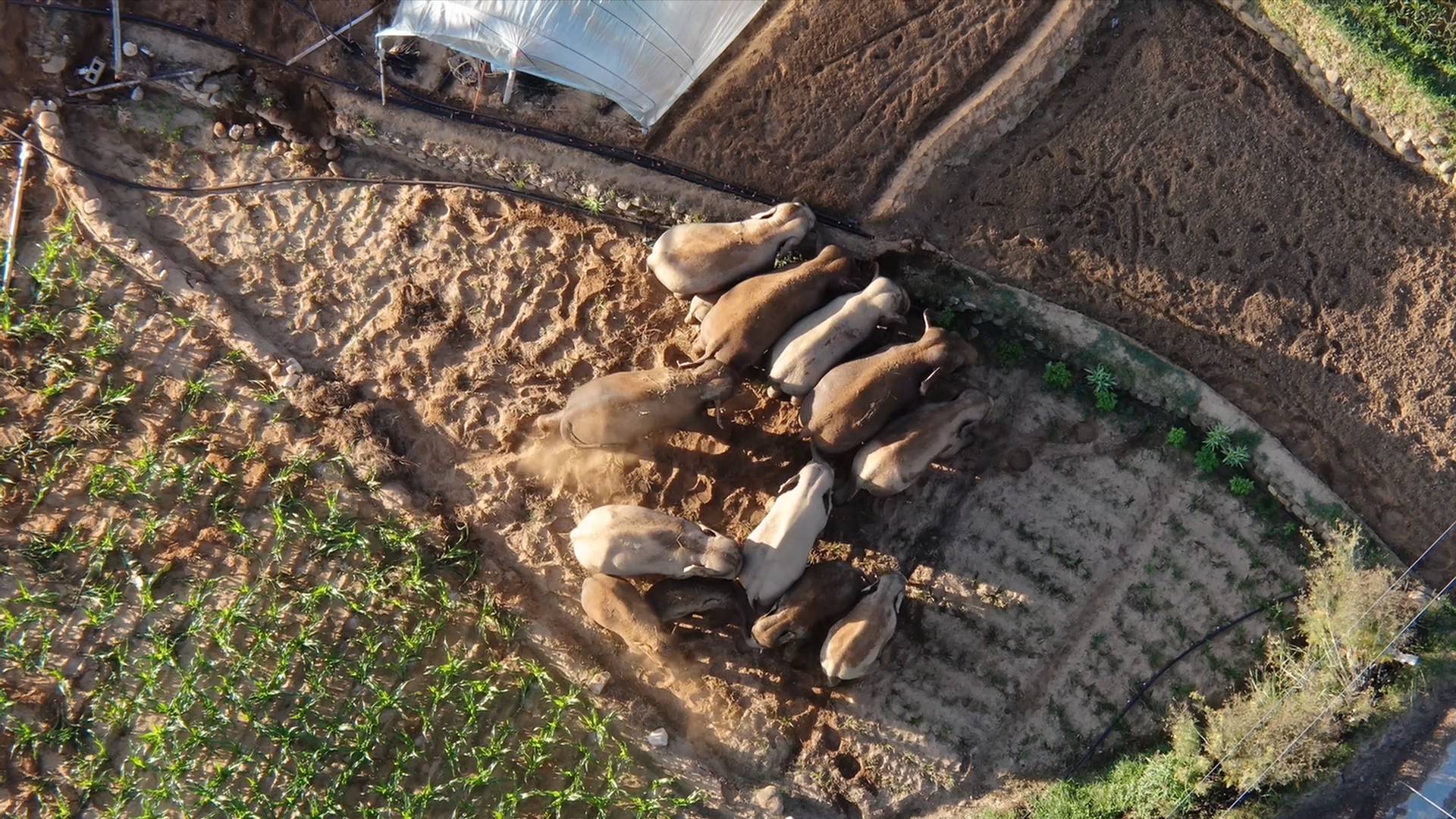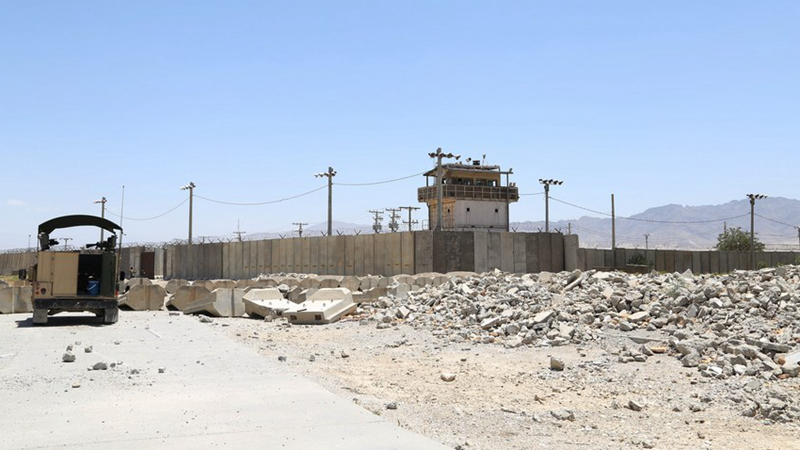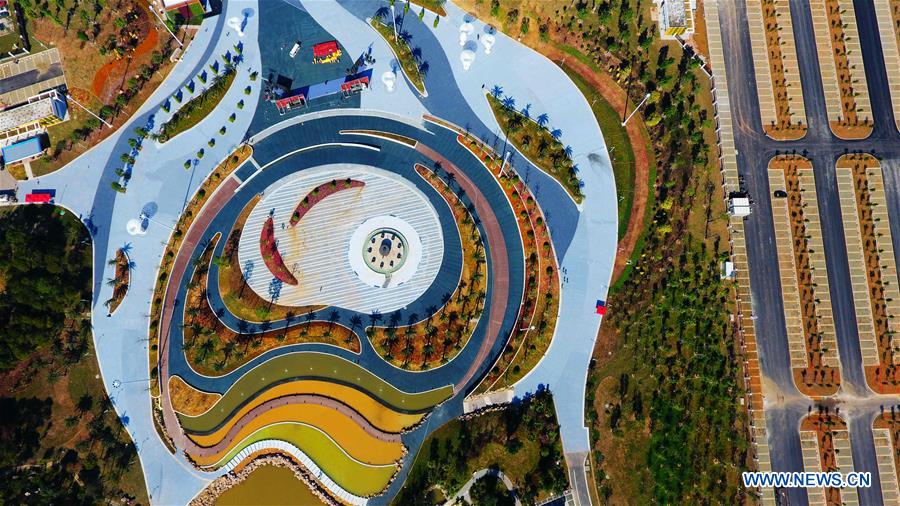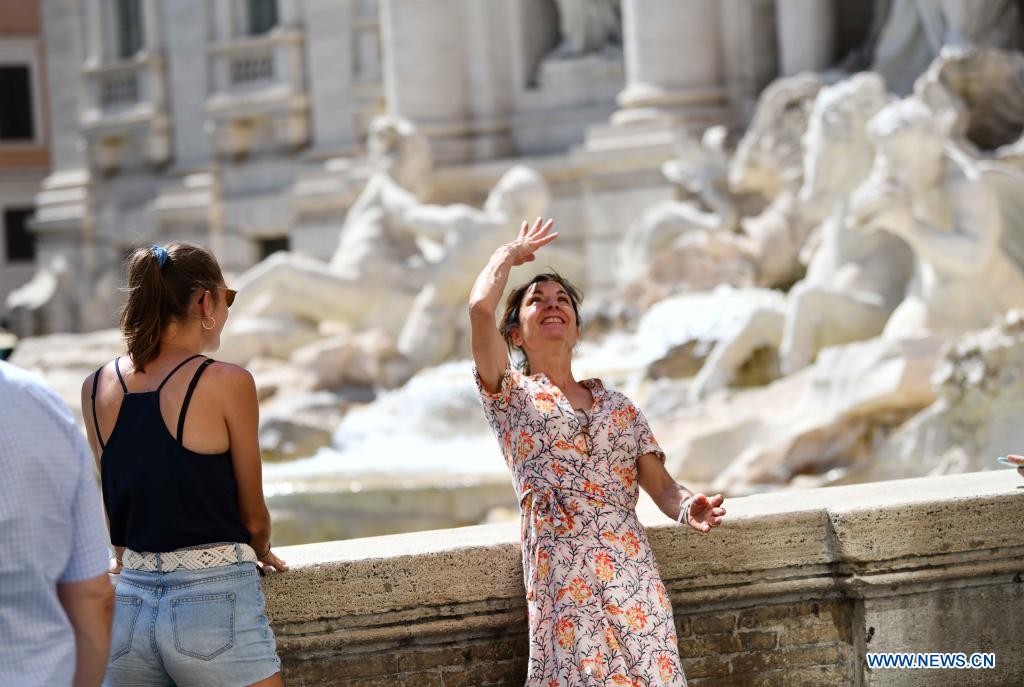
A tourist tosses a coin into the basin of the Fontana di Trevi in Rome, Italy, on July 11, 2021. (Xinhua/Jin Mamengni)
ROME, July 11 -- Over the last two years, Italy's massive tourism sector has been a study in contrasts: first too many tourists crowding the country's most popular spots, then almost none at all. Now, the sector is seeking to strike the right balance between the two extremes.
Before the coronavirus pandemic arrived in Italy, the big worry about tourism was over-crowding: the impact on infrastructure, the environment, and the quality of life of residents from many millions of tourists who clustered in a handful of locations, like Florence, Rome, and Venice.
Then, with the pandemic, tourism was virtually halted amid coronavirus lockdowns and travel restrictions. The tourism sector, which was responsible for pulling in 236.4 billion euros (280.6 billion U.S. dollars) in spending in 2019 before the pandemic, produced just 115.8 billion euros last year, according to the data firm Statista.
According to most estimates, the sector is not expected to recover to pre-pandemic levels until late 2023 or early 2024. But political leaders and many working in the sector are taking steps now to assure that as the sector strengthens it avoids the over-crowding problems that marked the pre-pandemic period.
"The goal is to reform the sector so that it offers a higher and more personalized level of service, and options that are less centralized than before," Gianfranco Lorenzo, head of the research department for Florence's Center for Turistic Studies (CST-Firenze), told Xinhua.
"Italy should de-emphasize the reliance on big tour busses that all pull into parking lots and overwhelm a small town for a few hours, (but promote) more high-quality tourism that shows visitors the country's marvels beyond the few dozen places everyone knows about," said Lorenzo.
Valeria Minghetti, the chief researcher at the Center for International Studies on the Economics of Tourism at Ca' Foscari University in Venice, said the problem of over-tourism is not unique to Italy.
She noted that popular tourist destinations in Europe such as Amsterdam, Barcelona, and Paris have similar problems. She said these cities should share information and best practices to help change the mentality of the average tourist.
"There's no reason people should be lined up to see one famous site when there are many that are just as important and just as impressive that too few people know about," Minghetti told Xinhua.
Those strategies are already in development.
This summer, for example, many cities are trying to focus the attention of visitors on outdoor attractions like sprawling gardens and architectural ruins, where visitors can remain spread out to keep coronavirus infection risks low.
Florence's Uffizi Galleries, one of the most visited museums in Italy, has launched the "Uffizi Diffusi" initiative -- the name roughly translates to the "Uffizi Scattered" -- which includes displaying some of the gallery's collection in museums in smaller towns around Tuscany to help draw tourists who might otherwise have spent their time in over-crowded Florence.
Uffizi director Eike Schmidt told Xinhua he believes the gallery's plan can serve as a blueprint for other parts of Italy and even in other countries.
Before the pandemic, Italy attracted an average of nearly 100 million tourists each year, according to calculations by the Italian Government Tourist Board (ENIT). Lorenzo, from CST-Firenze, said reducing the impact of tourists does not mean the country will have to host fewer tourists in the future.
"In a few years we could even have more tourists than we had before the pandemic," he said. "But for that to be sustainable, they just have to be spread out more evenly."


